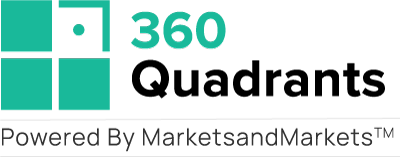Comparing 74 vendors in Application Modernization Services across 81 criteria.
What’s
Included in
This Report
Company Profiles
Strategy, financials, growth, and SWOTMarket Insights
Visual quadrant of competitors and leadersBenchmarking
Compare by product, region, and end-userLead Gen Add-on
Use the quadrant to attract clients- Analyst-led
- One-time payment
- Instant Access
Latest Industry News
Accenture Invests in Lyzr to Bring Agentic AI to Banking and Insurance Companies
 Business Wire
Business Wire
 Oct 2025
Oct 2025
Mastercard names Accenture veteran global CMO as Raja Rajamannar steps down
 Marketing-Interactive
Marketing-Interactive
 Oct 2025
Oct 2025
Ex-Accenture lead Brendan Connolly to join Cloudwerx as COO
 ARNnet
ARNnet
 Oct 2025
Oct 2025
Repsol and Accenture launch agentic AI pilot project
 chemengonline
chemengonline
 Oct 2025
Oct 2025
Accenture Buying UK-Based Tech And AI Consulting Firm Decho
 Pulse 2.0
Pulse 2.0
 Oct 2025
Oct 2025
Sap Order To Cash Lead Job in Nashville, TN at Accenture
 ZipRecruiter
ZipRecruiter
 Oct 2025
Oct 2025
Accenture: How Procurement Can Achieve Emissions Reduction
 Procurement Magazine
Procurement Magazine
 Oct 2025
Oct 2025
Company List
Full List
Company List +
| ACCENTURE | Dublin, Ireland | 1989 | Public |
| ADVANCED COMPUTER SOFTWARE | Slough, England | 2006 | |
| ASPIRE SYSTEMS | Tamil Nadu, India | 1996 | |
| ATOS | Bezons, Paris, France | 1972 | Public |
| BLU AGE | Ile-de-France, France | 2000 | |
| CAPGEMINI | Paris, France | 1967 | Public |
| CGI GROUP | Montreal, Canada | 1976 | |
| COGNIZANT | New Jersey, USA | 1994 | |
| DAMCO SOLUTIONS | New Jersey, US | 1996 | |
| DELL | Texas, USA | 1984 | |
| DXC | Virginia, USA | 2017 | |
| FINOIT | Mumbai, Maharashtra | 2010 | |
| FUJITSU | Tokyo, Japan | 1935 | Public |
| HCL | Noida, Uttar Pradesh, India | 1991 | Public |
| HEXAWARE | Maharashtra, India | 1990 | |
| IBM CORPORATION | Armonk, New York, US | 1911 | Public |
| INFOSYS | Karnataka, India | 2018 | |
| INTERRA INFORMATION TECHNOLOGIES | California, US | 1996 | |
| MICRO FOCUS | Newbury, UK | 1976 | Public |
| MICROSOFT CORPORATION | Redmond, Washington, US | 1975 | Public |
| NOUS INFOSYSTEMS | Karnataka, India | 1996 | |
| ORACLE | Austin, Texas, US | 1977 | Public |
| SOFT SUAVE | Tamil Nadu, India | 2012 | |
| SOFTSOL ModernizeNow PB Migration | Hyderabad, India | ||
| SOFTURA | Michigan, US | 1996 | |
| TECH MAHINDRA | Pune, Maharashtra, India | 1986 | Public |
| VALUECODERS | 2004 | ||
| VIRTUSA | Southborough, Massachusetts, USA | 1996 | |
| WIPRO | Karnataka, India | 1945 | Public |
| YASH TECHNOLOGIES | Illinois, US | 1996 |


